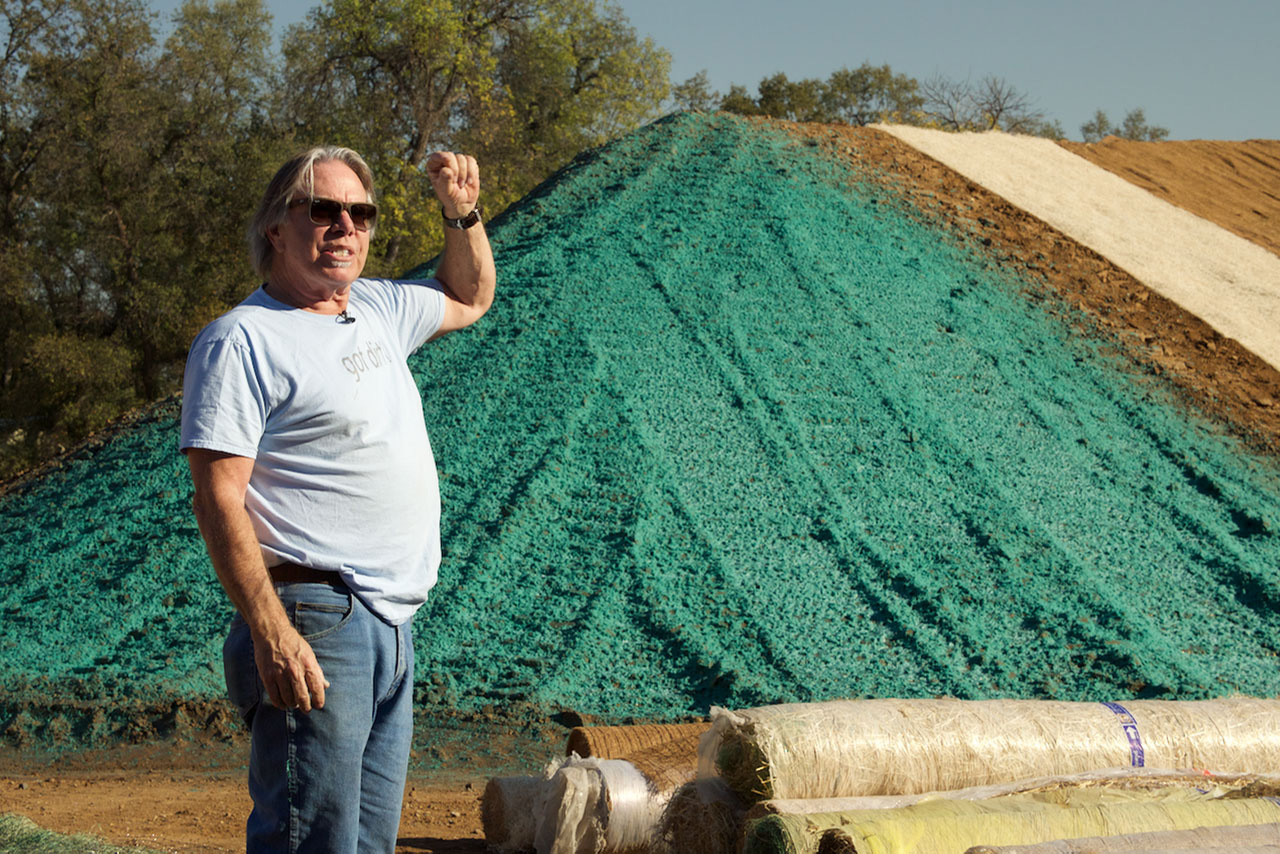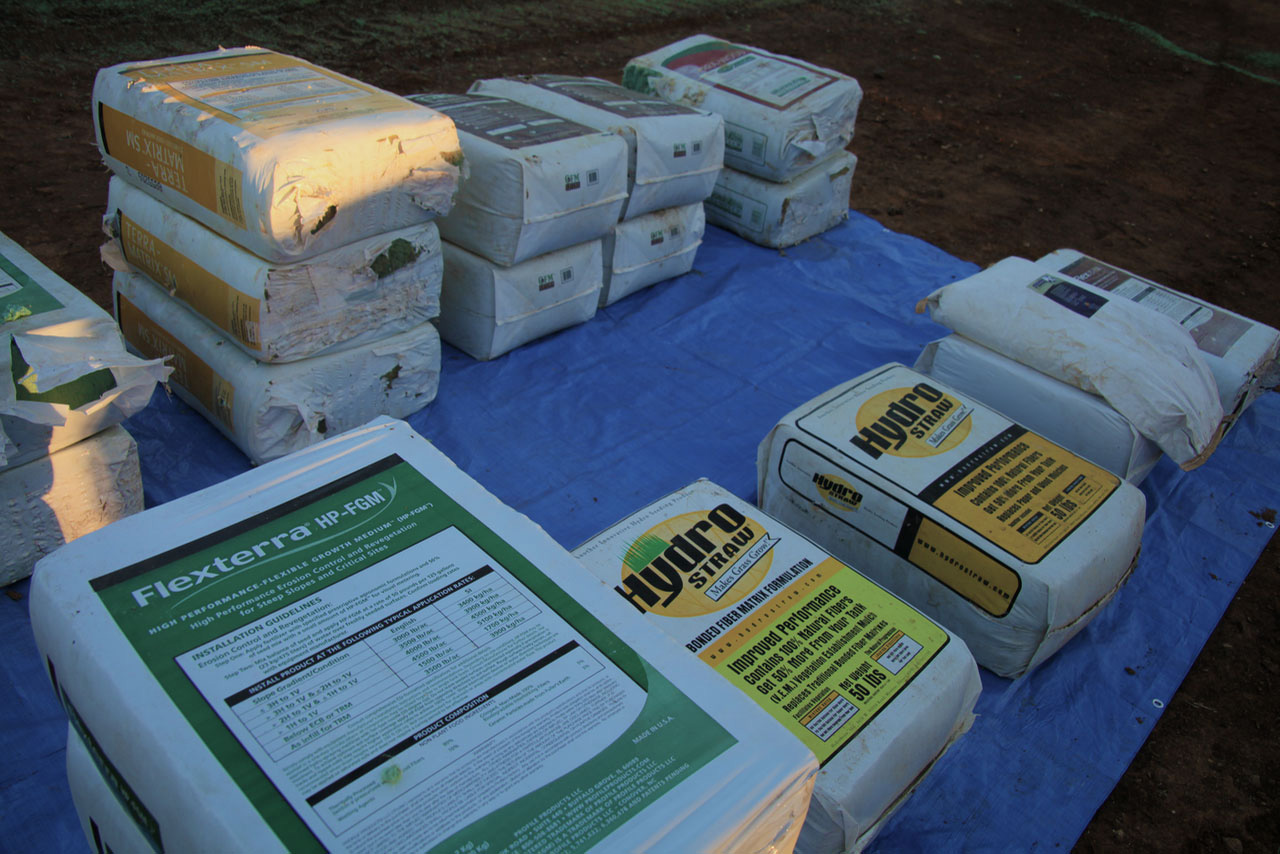22 Aug CARR FIRE – Post Fire Erosion Control Tips
Some of the post-fire remediation may include seeding and mulching the bare soil. By consulting your natural resource or Erosion Control Specialist you can determine the extent and range of treatments necessary, and an experienced professional can help you evaluate the risks.
But generally, if seeding is recommended, in the urban / wild land transition area you will want to look at re-seeding with a “native seed mix”. This is so important from an ecosystem point of view. Grasses native and endemic to your area will develop deep roots, set the stage for “natural succession” of other native shrubs and trees, be drought tolerant (they are California natives after all ) and reduce risks of developing an even more fire prone landscape. Try to avoid the temptation of using quick n’ cheap erosion control blend of seeds that are non-native annuals, like Italian rye grass. In three or 4 years you’ll probably end up with a nice stand of weeds, burrs, and star thistle.
Also consider adding mychorrizae fungi and a biotic organic fertilizer. Consider AM-120 Mycorrhizal Inoculum and Biosol or Sustaneorganic fertilizers. Most California Native grasses, especially in our North state area, have a symbiotic relationship with mychorrizae fungi. CA ‘natives’ don’t need commercial fertilizers with high water soluble N, however weeds and annuals love commercial fertilizer – so feed the good seeds, not the weedy annuals!
Seeding and then mulching with straw is the most common means to “protect” smaller areas, say <0.5 acres. Straw Mulch should be “clean” and weed-free. On construction site, especially highway projects, the straw should be anchored so it doesn’t blow away. Anchoring is not that critical on restoration or fire rehab sites – the first rains will “lay the straw down”.
Hydromulch and hydroseeding, that slurry you often see spread by a big mulching truck, is another way to go. It will be much more cost-effective for large areas and much quicker – with good access and available water (to make a new mix) an experienced Hydromulching professional can treat 2-5 acres a day. While Straw Mulch is the most common hand-applied mulch, hydromulchers use mulch derived from wood fiber. Wood fiber mulches can be the “Mercedes Benz” of mulches, long lasting and very effective. Profile Products make a reputable line of products. There is a relatively new hydraulically applied mulch made from sterile wheatgrass, called Hydrostraw. Then the seed and fungi and fertilizer can be added to the slurry.


There is so so much to know with regards to proper erosion control. It is so much more than “Common Sense”. A practitioner friend often says, “ erosion control is not brain surgery or rocket science – it is much more difficult!
Stay tuned for a few videos on this subject coming here soon!
